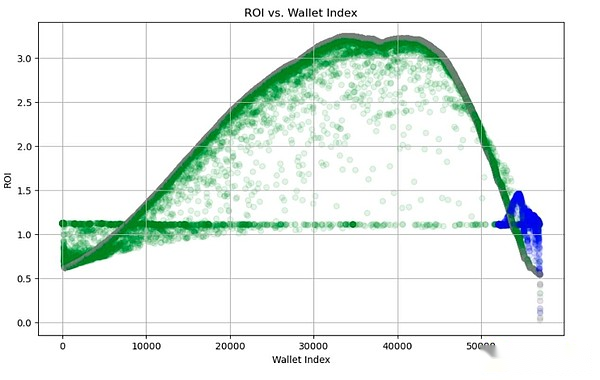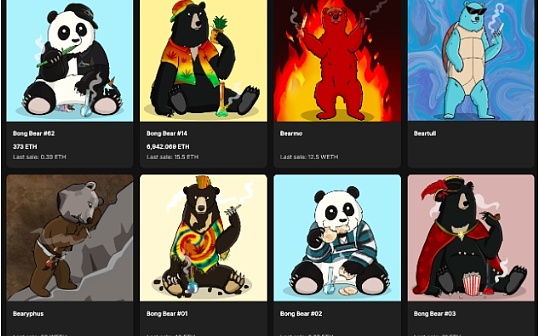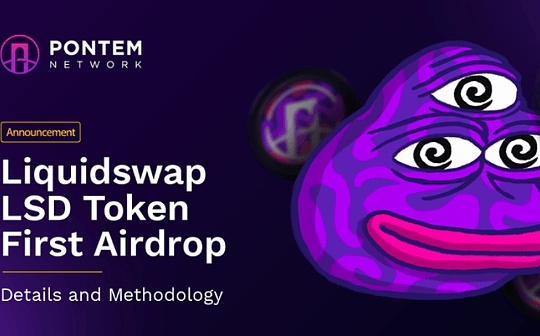
Source: Pontem Network; Compilation: Tao Zhu, Bitchain Vision
This article will introduce the details and methods of airdropping LSDs to users of the Liquidswap protocol for the first time.
distribute:
The first LSD airdrop will account for 5% of the total token supply, with 69% flowing during the token generation event (TGE), and the rest will be linearly attributable within 4 months, released monthly.Another 10% will be offered over time in the form of pledge rewards and future airdrops.Tokens can be collected at claim.liquidswap.com
Airdrops will be allocated according to the following categories:
-
27% allocated to community NFTs, meme tokens, product testers and ambassadors on July 10, 2024;
-
49% allocated to early adopters: transactions and liquidity added to Liquidswap by snapshot date April 7, 2024;
-
24% Assigned to late users: Transactions and liquidity added to Liquidswap between the snapshot date April 7, 2024 and the snapshot date July 10, 2024.
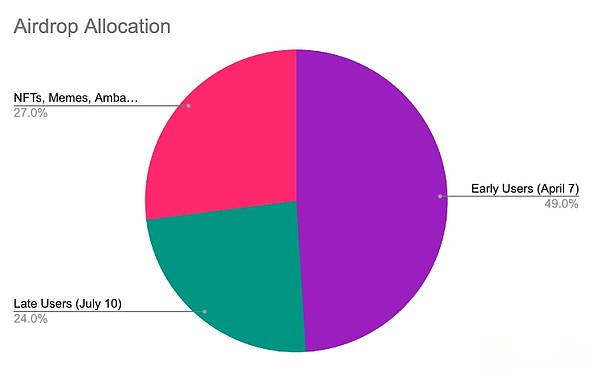
Confirmed community members receive the following rewards:
In airdrop calculations, the volume and liquidity counts of early and late users will apply the reward multiplier to provide more rewards for key parts of the community.
The following volume and liquidity multipliers apply to these categories:
-
10% allocated to NFT and meme holders
-
20% verified X fans assigned to @Pontem and LumioFDN
-
10% Assigned to Lumio Whitelist Address
For example, if you traded $100 and your total bonus multiplier is 10% + 20%, then the volume for your April and July snapshots will be counted at $130.
Whales are excluded from the bonus to benefit smaller users (maximum cost = $500).
method:
Cost ratio, robot mitigation, wallet maximum, and allocation to intermediate level users.
Cost ratio:
The individual airdrop allocation uses the cost ratio associated with each category to determine the relatively reasonable cost ratio for each account (assuming the price of the token at the time of issuance).
Each category uses the following costs:
-
Trading volume:The transaction volume cost is 0.2% – is an approximation of the average transaction fees of non-related and related assets.For example, if the user trades $100, the cost is $0.20
-
Time-weighted liquidity increases:15% of the cost of allocating capital in one year.For example, if the user allocates $100 in liquidity for 365 days, the cost is $15
-
Pirate NFT:90 APT, APT price is $6.86
-
Dark Ages NFT:58 APT, the price of APT is $6.86
-
Doodoo NFT:21 APT, the price of APT is $6.86
-
Doodoo meme coins:$0.54
-
ReTURD meme Coin:$6.33
-
Product Tester Level 1:$1,000
-
Product Tester Level 2: $500
-
Product Tester Level 3:$250
-
Ambassador Level 1:$1,000
-
Ambassador Level 2:$500
-
Ambassador Level 3:$200
Use the following basic cost ratio for each category:
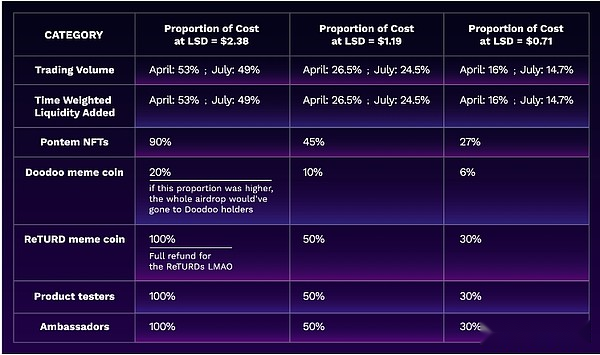
Robot mitigation measures:
Use the cost ratio so that even if the robot is included in the airdrop, they will be rewarded at their cost ratio.For example, if a bot spends $100 in an account and a person spends $100, they will get the same amount of airdrops.Robots are humans too.The reward is proportional to the cost and value Liquidswap receives, so no one will lose money using this approach.
As a standard sybil detection measure, the minimum threshold is 5 transactions, $250 transaction volume or $100 1 year increase liquidity to remove the address of the bot spam to the protocol.Any addresses that receive less than 1 LSD will also be deleted.In this way, 57,000 wallets are considered for airdrops.It is generally believed that the trend for robots is to send spam to low-cost addresses to get the lowest airdrop allocation.
There may still be robot accounts above these thresholds, so a larger proportion of the final cost is allocated to categories that are unlikely to have robots: intermediate level users and users eligible for the reward category.
We have also specifically deleted the addresses of some accounts associated with the company or partner accounts.
Wallet cap and reallocation to intermediate levels
After running multiple simulations in the max allocation, we determined the upper limit of 8,400 LSD.This cap allows us to provide appropriate rewards to a large portion of our community, while also acknowledging the large volume and liquidity generated by a few people on our application.The maximum personal amount that a wallet can receive is 8400 LSD tokens.
All tokens exceeding the maximum value are reassigned to all wallets below the maximum whale limit.We assume these are the most valuable users and do not exceed the whale cap.This redistribution range is selected based on the assumption that the most valuable user belongs to this “middle class” user.
Reassignment of “middle-class” users is allocated according to standard polynomial curves so that smaller users who may be higher in robot allocations are allocated less and larger cost users who have a smaller impact on cost ratio.
Below is a view of the distribution of each wallet with 57,000 wallets in the reallocation range.

recommend:
Recommended bonuses are 10% of the recommended user’s transaction volume and increased liquidity.This means that if you recommend a user and they traded $100, you will get $10 for your own account.
Users can continue to share their referral links to earn rewards and airdrop calculations in the future.
analyze:
Funds and bonuses allocated to community categories put these users at higher costs.The following figure maps the wallet index to the allocation.The area under the curve is the sum assigned to the users.Most airdrop allocations tend toward large whale accounts and robots.
The shift to support community and “middle-level” users expands the curve, making the slope of cumulative allocations in the wallet index less steep.This means that many smaller users get additional allocations that otherwise would flow to whales, non-community users, or bots.

The following figure enlarges a part of the entire distribution.It is obvious from this figure that the proportion of cost borne by the colored community member group is higher than that of the gray non-community member group.
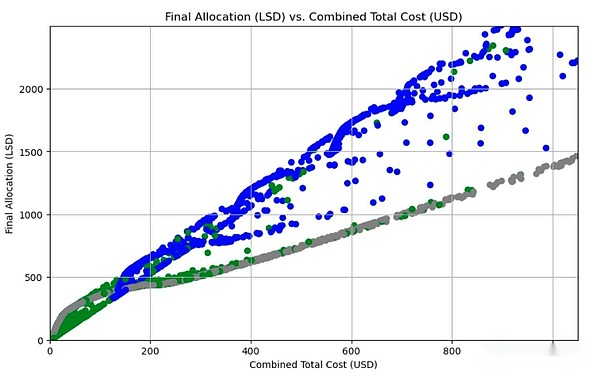
Here are the average and median ratios for costs (ROI) broken down by different categories (this list is not exhaustive).
